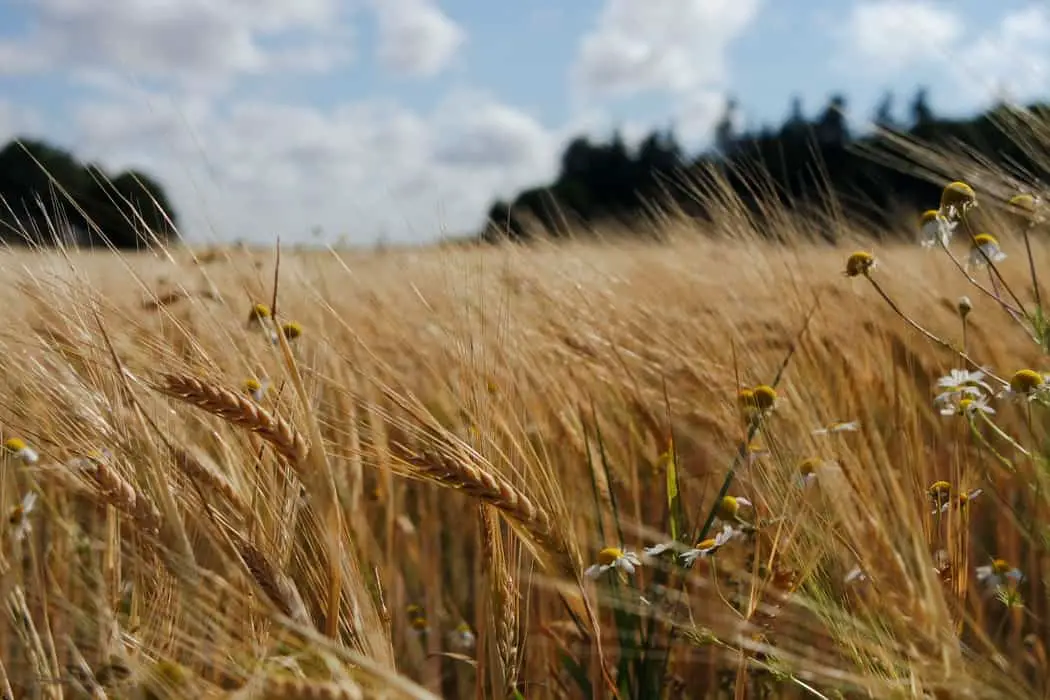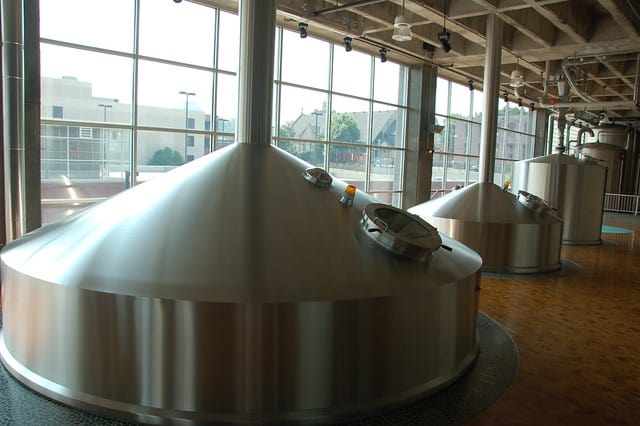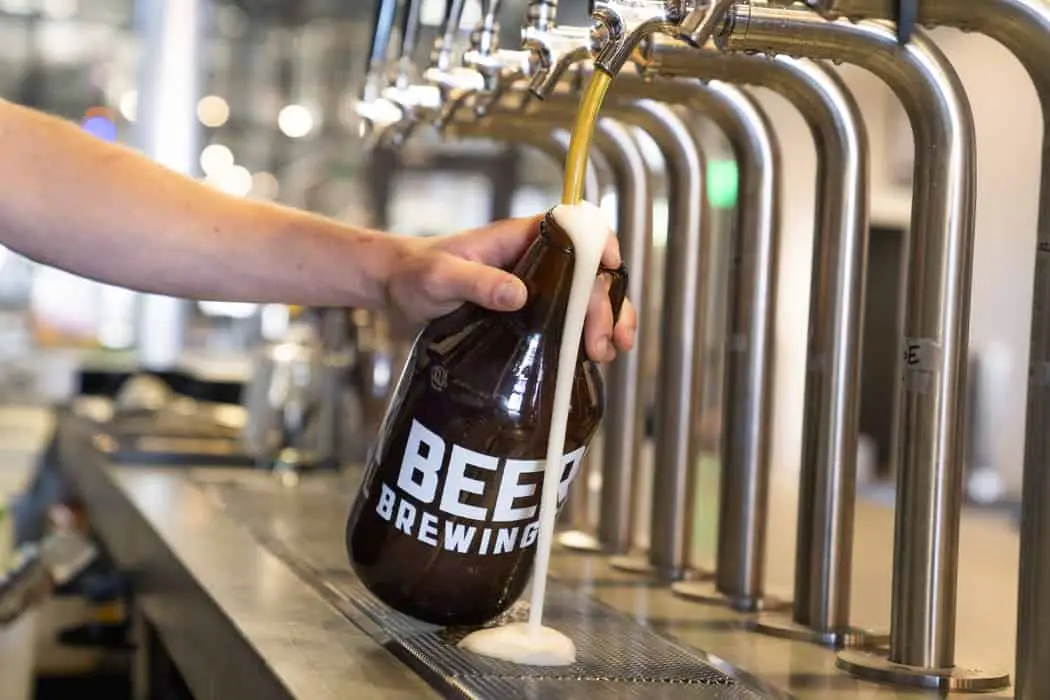Table of Contents
*This post may contain affiliate links. As an Amazon Associate we earn from qualifying purchases.
There’s nothing better than ending a stressful week with a cold beer to start your weekend off right. While we drink the stuff pretty frequently, Americans alone consume more than six billion gallons of beer a year, very few of us actually know what goes into making a beer taste the way it does or the ingredients required to make beer in the first place.
In this article will take a look at what beer gets made of as well as all of the essential components in your favorite beer choices. We’ll also take a look at the brewing process and what different companies like to do to create their signature taste blends.
The History Of Beer

Image source: Unsplash
There has been in our culture, as well as in other cultures, for a very long time. So long that it’s evolved as we have throughout thousands of years. The Egyptians were the first the document their Brewing process on papyrus scrolls that got found in ancient Pharaoh tombs that describe beer being used for religious purposes and made out of things like dates and pomegranates.
History has taught us that the first people who made beer as close to how we brew it today were the Mesopotamians who we’re making beer from 10,000 B.C. The Middle Ages was likely the first an earliest time frame where we feel that beer got initiated in the more modern fashion and it was from these times that we learned how to perfect the recipe into what we drink today.
WHAT IS BEER MADE OF?

Image source: Unsplash
While the brewing process itself is a complicated ordeal that usually is maintained and monitored by high-efficiency machines and larger breweries, Beer itself gets made out of four different and essential ingredients. These ingredients are:
- Malted barley
- Water
- Hops
- Yeast
While the ingredients themselves are a straightforward combination and easy to acquire even for at home brewing; there’s a lot that goes into making beer that you may not be aware. When you consider that most people aren’t aware of what each ingredient does to make your beer taste specific ways.
Different Malted Grains

Image source: Unsplash
Barley is what starts off your brewing process, and it’s the foundation to a good beer brew. Malted barley is a processed form of barley that undergoes two different processes to provide breweries the perfect result that starts them out for their signature beers.
The reason that a lot of brewers use barley above other grains is that barley can retain its husk through harvesting, handling, and milling.
Why is husk important? The shell is essential because it regulates the water intake during the malting process and it slows it’s sprouting during molting as well. It also keeps the shape of the grain which is essential when you’re filtering out your brew later on.
So because it’s durable, barley is kept from being gummy and sticky and that prevents it from ruining the Machinery later on.
On that note, you can make malt out of the following grains:
- Rye
- Rice
- Wheat
- Oat
- Chit
When it comes to wheat malts, many people find that it can be challenging to work with, especially if you don’t like cleaning out the mash tun too frequently. However, people who do successfully brew beer with a wheat malt will find that they will be able to enjoy a longer lasting foam and a bready flavor to their beer.
Rye is a little bit spicier, and it may be challenging to lauter because it doesn’t contain a husk. Individuals who work with Rye malts usually incorporate a bolder flavored hop to complement its taste. Oat gives your beer a balanced flavor and a silky aftertaste. If you like Smooth patches, then it would be a high grain to malt.
Chit is technically a type of barley malt, but instead of the ideal mulch used in beer, this one relies on a short germination period, and it doesn’t do a lot for your beer as a whole. It’s also more expensive, so if you can avoid using it, it probably is for the best.
[amazon bestseller=”beer brewing kit” items=”5″]
YOUR BARLEY DETERMINES YOUR TASTE

via Giphy
Malting is the concept of adding water to your grain Weatherby barley or one of the others posted above and letting it partially germinate before removing it and roasting the kernels to the perfect temperature. When you allow your grain to grow, it unlocks the sugars and starches that are inside of the colonel.
You want the sugars and starches available so that when you add your yeast later on in production, you can feed the fermentation and thus create the alcohol. The trying is necessary right after your initial germination to stop germination and keep it from sprouting into a plant.
Once the grain itself gets malted, a brewer may choose to roast their malts to bring out different flavors depending on the grain itself as well as the type of grain used. The type of barley that you use also determines what your brew is going to taste like.
There are three distinct shapes of barley, and each of these has its potential to create its unique flavor profile. The six-row is a stock that has six rows of barley heads in which it produces the grain. The crowded green kernels mean that the kernel’s themselves are smaller which has higher concentrations of protein and bear coloring potential.
The two-rows is barley from a more traditional European barley, and it produces a larger green yield. These kernels also provide a higher malt extract release, and it’s the plant that’s responsible for Brewing American light lagers.
And finally, we have the winter two-rows and the winter six-rows which were the barley varieties that were able to survive and germinate even in Winter conditions. Barley is notorious for being intolerant of colder temperatures. These specific varieties are bred to become more robust, and they help farmers prepare their fields for the new spring.
Currently, there are over 148 varieties of barley that can get utilized for brewing beer, and each of them provides their flavor profile. For those who are interested in Brewing at home, it might not be a bad idea to check out some of the varieties available.
HOW IS BEER MADE?
Now that you have the basics of what starts off a good beer will have to go over the process in which beer is made from The barley kernel to the bottle in the refrigerator.
The Mill
The mail is the first step in the beer-making process. If you’re looking into a larger Brewery, most of the time they will malt their barley before they mill it, but smaller breweries purchase it already melted and ready to go. In the mail, the malted barley grains will go through a cracking process in which releases the starch that got stuck within the grain.
The Mash Mixer
The mash mixer is the next step in the process. Hot water is poured in with cracked barley, and the hot water turns the starches back into sugar which then dissolves into the water itself.
The Lauter Tun
The Lauter tun works as a type of colander where the mash gets transferred into it, and A clear sugary liquid called wort gets strained from the pulp. The Brewer will then add hot water to the paste to dilute it down before being taken to the next step
The Brew Kettle

Image source: Flickr
The Brew kettle is similar to a pressure cooker especially and how it has to work. The word is strained into this Brew Kettle and brought to a gentle boil. It’s at the stage that your hops will be added in to add the flavor to the mixture. Most of the time, hops get compressed into pellets, and they’ll dissolve into the liquid once introduced.
The Fermenter
Once your mixture cools down enough, it’s then transferred over to the fermenter Where the alcohol itself gets produced. Yeast will get introduced while it’s cold where it will start to consume the sugars that are in the water and create alcohol and carbon dioxide as a by-product. Usually, it takes about five to ten days to convert enough sugars into alcohol ultimately.
The Aging Tank
An aging tank is a place where your beer will then be placed for another four days to complete a more purified form of fermenting.
The Finishing Tank
This stage is where your beer gets finalized. The beer will undergo a carbonization process before it’s transferred to empty kegs or beer bottles. Once the beer is packaged up, companies often place their product in cold storage until they’re shipped out and ready for sale.
IN CONCLUSION
They were some of the main components in brewing techniques needed to make the beer that you love and drink regularly. As you can see, the ingredients may be simple, but there’s a lot of complexity involved to create the perfect beer.
Featured Image: Unsplash

